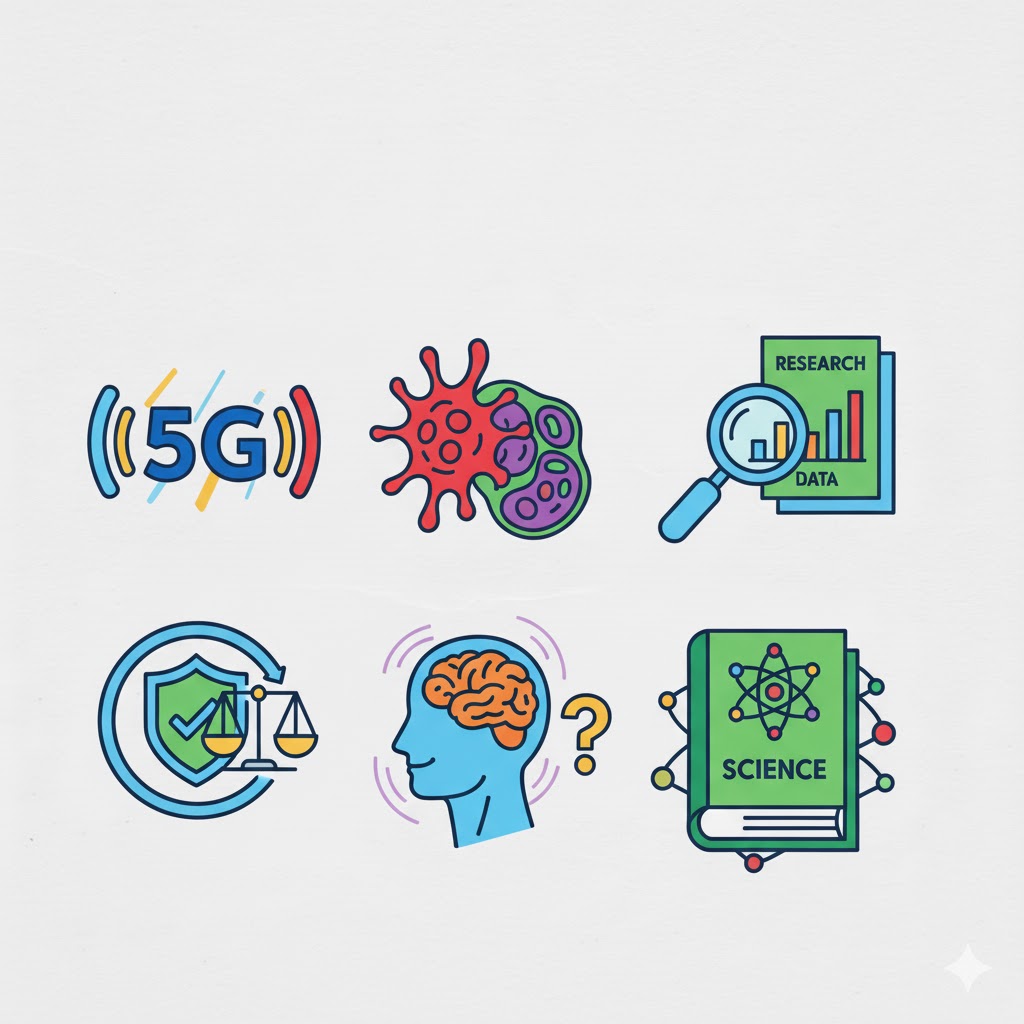-

5G and Cancer: Examining the Scientific Evidence
•
The relationship between wireless technology and cancer risk has been debated for decades. With 5G networks now deployed in over 100 countries, understanding what the scientific evidence actually says about cancer risk is crucial. This comprehensive review examines the current state of research, regulatory classifications, and what we can reasonably conclude from available data.…
-
What Research Says About 5G Health Effects: A Science-Based Look at the Evidence
•
The rollout of 5G networks has sparked intense debate about potential health effects. With over 1.2 billion 5G connections expected by 2025, understanding what the science actually says is more important than ever. Let’s examine the research objectively. Understanding 5G Technology and EMF Exposure Fifth-generation (5G) wireless technology was first widely deployed in 2019…
-
Millimeter Waves 101: Understanding 5G’s Higher Frequencies
•
When you hear about 5G’s revolutionary speed and capacity, you’re hearing about millimeter waves—a type of electromagnetic radiation that’s fundamentally different from anything previous wireless generations have used. Understanding these high-frequency waves is essential for grasping both what makes 5G special and what makes it controversial. Let’s dive deep into the science of millimeter…
-
5G Explained: What’s Different About EMF Exposure?
•
The rollout of 5G wireless technology has sparked both excitement and concern. While promises of lightning-fast downloads and ultra-low latency are enticing, many people wonder: is 5G’s EMF exposure fundamentally different from what we’ve experienced with 4G? The short answer is yes—and understanding these differences is crucial for making informed decisions about your exposure.…
-
FCC Regulations vs. European Standards: Key Differences
•
If you’re researching EMF safety standards, you’ve likely encountered two major regulatory frameworks: the U.S. Federal Communications Commission (FCC) guidelines and the European standards based on ICNIRP recommendations. While both aim to protect public health, they have significant differences that matter for manufacturers, regulators, and consumers worldwide. Let’s break down these key differences and…
-
ICNIRP Standards: What Do They Really Mean?
•
You’ve probably heard about ICNIRP standards when researching EMF safety, but what exactly are they? More importantly, what do they actually mean for your daily exposure to electromagnetic fields from phones, WiFi, and cell towers? Let’s decode these international standards in plain language and understand what’s really being measured and protected. What is ICNIRP?…
-
WHO EMF Exposure Guidelines Explained: What You Need to Know
•
If you’ve ever wondered whether the electromagnetic fields (EMF) from your phone, WiFi router, or nearby cell tower are safe, you’re not alone. Millions of people worldwide share this concern, which is why the World Health Organization (WHO) has been working for decades to establish clear, science-based guidelines for EMF exposure. In this post,…
-
How to Create an EMF-Safe Workspace — Especially If You Work from Home
•
For millions, the home has become the office. While this shift offers flexibility, it also means we’re spending 8+ hours a day in a home environment that may not be optimized for long-term health, particularly regarding Electromagnetic Field (EMF) exposure. Your router, laptop, wireless peripherals, and even the building’s wiring create a constant, low-level…
-
The Truth About Airplane Mode — and When to Use It
•
We all know the drill: “Please ensure your electronic devices are in airplane mode for the duration of the flight.” For most, it’s a rule to follow without much thought. But what is airplane mode actually doing? And could this simple feature be one of the most powerful, yet underused, tools for managing your daily EMF…
-
Are Your Smart Plugs and Bluetooth Speakers EMF Hotspots?
•
The smart home revolution promises a future of convenience, controlled by a simple voice command or a tap on your phone. Devices like smart plugs and Bluetooth speakers are at the heart of this shift, making our lives easier. But this convenience often comes with an invisible trade-off: these devices can be significant, constant…
